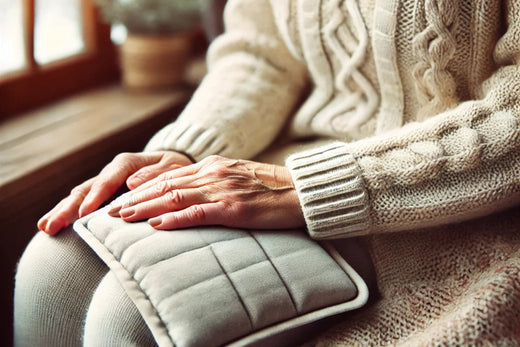Your Cart is Empty
FREE SHIPPING OVER $45 & RETURNLESS REFUNDS

If you’re like me, when the cold hits, everything can feel a little... creaky. You roll out of bed, and it feels like your joints are protesting, right? Maybe it's just winter stiffness, or maybe, just maybe, it’s an arthritis flare-up. How do you tell the difference? And more importantly, what can you do about it?
Winter stiffness is pretty common, especially as we get older. It's that feeling of tightness or discomfort in your joints, typically when you wake up or after sitting still for a while.
What it feels like: Think of it like a frozen robot—your joints feel stiff, but not super painful. It gets better once you start moving.
When it happens: Usually in the morning when you first wake up or after sitting for too long. Your body is saying, "Hey, time to stretch and move!"
Why it happens: Cold weather can tighten muscles and make our joints feel stiff. Plus, in the winter, we’re often less active, which doesn’t help either.
How to treat it:
Now, arthritis flare-ups are a whole different beast. I’ve been through my fair share, and let me tell you, it’s more than just stiffness—it’s pain. Real, persistent pain.
What it feels like: Your joints hurt all the time, even after you start moving. You might notice swelling, redness, or warmth in one or two joints (typically in the knees, hands, or hips).
When it happens: It’s not just after a cold night; it can last all day or longer. Sometimes, a change in weather or even doing too much can trigger a flare-up.
Why it happens: Arthritis is inflammation in the joints, and cold weather can make it worse. It’s like your body’s way of saying, “I need a break!”
How to treat it:
Yes, winter stiffness and arthritis flare-ups can feel similar, but they’re not quite the same thing. Both can cause discomfort, but with a flare-up, you’re dealing with more intense pain that doesn’t go away easily, even when you move around.
Winter stiffness is usually temporary, and it can be relieved with movement and warmth. Arthritis flare-ups, on the other hand, might need more focused treatment and could last longer.
But here’s the thing—they can overlap. Cold weather can make winter stiffness feel worse, and for those with arthritis, it can trigger a flare-up, making both symptoms occur together.
What about you? Do you notice more stiffness or flare-ups during the winter? How do you manage your joint pain in the colder months? I’d love to hear your thoughts or tips! Drop me a comment or shoot me a message—we’re in this together!
Stay warm and take care of those joints,
Mark
P.S. If you’re dealing with a winter flare-up, don’t forget to try Outback Pain Cream for quick, soothing relief.
Jackie
January 23, 2025
Mark I have severe osteoarthritis everywhere in my body. Had one knee replaced last June, waiting to do the other one this year. I am 83 and I use your Outback Pain Cream everywhere. Have to use a walker to get around. This arctic blast we are having in Denver really does make my pain everywhere worse. I agree a warm heated blanket does help the pain. I have been using your products for several years. My favorite is the Outback Pain Cream.